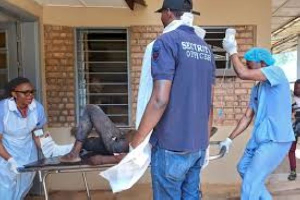The Upper West Region recorded the highest number of malaria cases of 51 per cent among children aged six to 59 months, the 2011 Multiple Cluster Survey Report has revealed.
The Report made the region one with the highest burden of malaria diseases, even though the preliminary 2014 Ghana Demographic Health Survey reported a lower malaria prevalence of 37.8 per cent, the region was still burdened with high malaria cases.
This means people in the region, particularly vulnerable groups, such as children less than five year and pregnant women, suffer disproportionately from malaria, compared to other regions in Ghana, the Report pointed out.
Dr Winfred Ofosu, Deputy Upper West Regional Director of Public Health, made these known at a Regional Stakeholder Meeting on the implementation of Seasonal Malaria Chemo-prevention (SMC) in the region in Wa,
The SMC is a new initiative in Ghana, and the meeting was part of the planning process to ensure its successful implementation in the region.
Dr Ofosu said to achieve a malaria-free Ghana; a number of interventions had been implemented, such as the distribution and use of insecticide treated nets, especially by children and pregnant women
Indoor residual spraying, intermittent prevention treatment with sulfadoxine pyrimethammine for pregnant women, adopted artemsinin-based combination therapy for malaria treatment, and pursuing prompt diagnosis and treatment of malaria cases among other interventions to reduce the burden had also been implemented.
He said in 2014, a total of 34,382 treated nets were distributed to pregnant women in the region to prevent malaria infection.
The region witnessed a 64.2 per cent reduction in malaria cases from 960,524 cases in 2013 to 344,027 cases in 2014.
Dr. Ofosu said the statistics reassured health authorities in the region that the current interventions against malaria were having great impact, but noted that malaria was a difficult disease which could not be easily dealt with hence the use of SMC to supplement the other interventions.
The Public Health Director encouraged stakeholders to develop interest in survival of children and good health for the entire population,
Health News of Saturday, 11 July 2015
Source: GNA
















